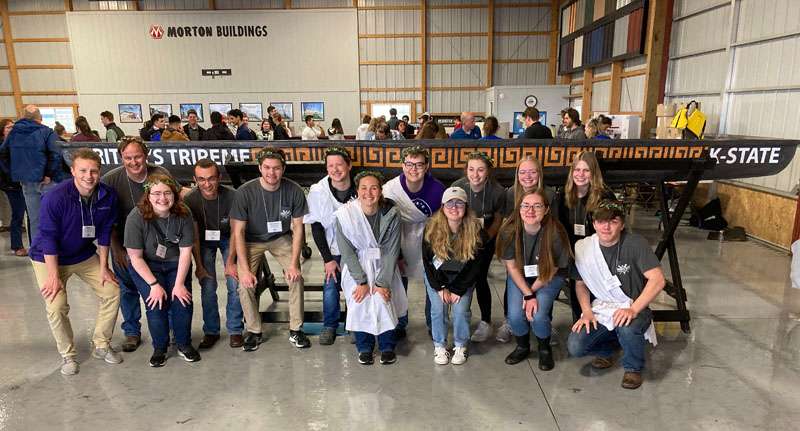For a while, it seemed like the hype around augmented and virtual reality in business was fading. Then COVID-19 closed workplaces around the world. This forced executives to assess which technologies could improve old processes and keep people connected into the next normal.
Using tools that mimic real experiences, such as augmented reality and virtual reality, organizations have discovered how to overcome obstacles in a changing landscape. Things are unlikely to return to their pre-pandemic status, so leaders need to take note of what the future of work entails. It is only by adopting new technologies and pushing the boundaries of what is possible that companies can gain competitive advantages.
With that in mind, here are three use cases that demonstrate the potential of AR and VR technology:
• Transportation
The American Society of Civil Engineers, which assesses the country’s infrastructure every four years, gave a C-minus in its 2021 report. United States, substantial progress is still needed, as evidenced by the $ 1 trillion infrastructure bill that was passed by the US House of Representatives in early November.
Fortunately, there are countless ways AR can help. One promising use case is in train dispatcher control rooms, where workers typically rely on bulky 2D screens and other restrictive equipment. To eliminate these constraints, Ross & Baruzzini, an international technology and engineering consulting firm, developed HoloRail, a user interface that harnesses augmented reality to recreate 3D displays.
Although the initial iteration was intended as a proof of concept, Megan Huff, vice president and general manager of the mobility division of Ross & Baruzzini, believes that widespread adoption of AR technology in the industry is imminent. “About 90% of dispatchers who used our pilot were only able to complete unattended test procedures after a 10-minute training tutorial on using the equipment and software, and 80% said that ‘they thought they could use the platform to accomplish their tasks. She says. “The gesture interface was easier to learn and use for dispatchers than expected. AR will change the operation of the control room and the day-to-day work experience for all aspects of the transportation industry. .
• Retail and purchasing
The COVID-19 pandemic has forced consumers to do most of their shopping from the comfort of their own homes (a change many have embraced), but that hasn’t removed their desire for a ‘connected shopping experience’ . To meet this desire, retailers have been looking for ways to recreate the in-store shopping experience through digital channels. Many have turned to AR and VR solutions, and consumer feedback has been overwhelmingly positive. In fact, the majority of Gen Xers say they will be using AR when shopping for years to come.
One brand keen to take advantage of this technological trend is BMW. The automaker recently launched BMW Virtual Viewer to allow car buyers in Europe to discover and interact with its vehicles using a web-based AR technology platform. Customers can see some models inside and out and see what full size cars would look like around their homes.
Sophie Chiappe, brand communications manager at BMW UK, believes the experience offers immersive potential that in-person experiences cannot replicate. “This AR work was designed to be engaging to use, from navigation to built-in quizzes, and we’re excited to launch it by showcasing three of our plug-in hybrid cars and the technology they offer,†she said. declared. .
• Remote work
For decades, science fiction writers have explored what a shared 3D digital space might look like. This concept, called the metaverse, is finally coming true. A multitude of companies, including Roblox, Epic and Facebook, are eager to create the virtual world that will replace the Internet. CEO Mark Zuckerberg even said Facebook should be seen as a metaverse business rather than a social media platform, and the company announced in late October that it was even renaming its name to Meta.
Even before that, Facebook last year released Horizon, a VR video game that allows users to create and share worlds online. Most recently, he launched Horizon Workrooms, a virtual meeting space designed to support remote teams with features that minimize the barriers posed by physical distance.
“When you use Workrooms, you feel like you’re really there with people,†Zuckerberg says. “You will notice that conversations flow more naturally and you will pick up on the social cues that are missing on the video: people turn to listen to each other, hand gestures and spatial audio to give everyone a sense of belonging. in the room. There is also a whiteboard for brainstorming together, a screen for videoconference participants and [a] virtual office so you can use your computer in VR for presentations or multitasking. Going forward, working together will be one of the main ways people use the metaverse. “
Although many emerging commercial applications for virtual reality and augmented reality are still in the experimental phase, the potential of these technologies seems to be growing every day. Given the positive feedback from the above use cases, that potential will translate into real value as soon as possible.
 Xing Wu
Xing Wu



